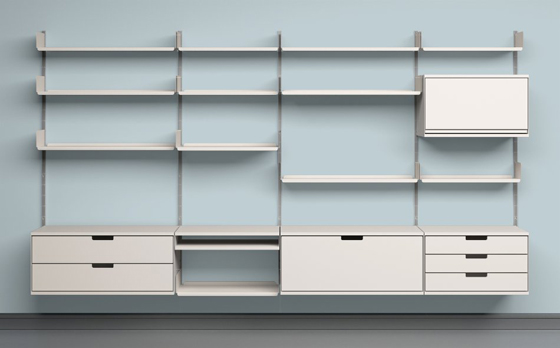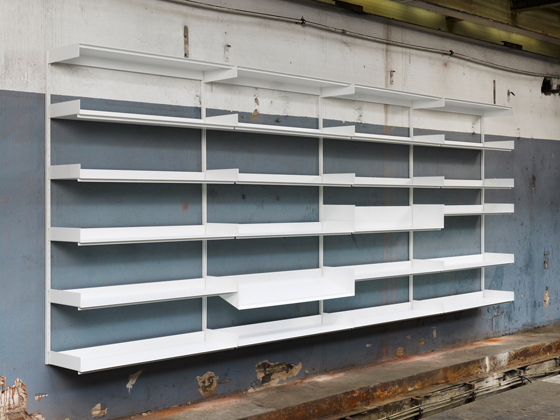Same but Different: classic design and the design of change
Texte par Simon Keane-Cowell
Zürich, Suisse
12.12.12
Everything changes, so they say. But should it? What about decades-old, often iconic designs? Should they be preserved, as it were, their contemporary production remaining ‘true’ in every respect to the ‘original’? Or ought manufacturers be free to modify them – materially, technically, even formally – in the name of contemporary market appeal. And what about the thorny issue of authorship? Architonic investigates.
OK. I confess. Once upon a time (and we’re talking a good few years ago), I bought an unlicensed copy of an iconic mid-century furniture design. Call it a temporary aberration, a moment of madness, if you will. I’m not proud of myself and, rightly so, was disappointed with the quality of the chair once it was installed in my home. Lesson learnt.
While action groups such as ACID (Anti Copying in Design) in the UK work hard to promote awareness of the abuse of intellectual-property rights within design (with publications like the consumer title Elle Decoration also taking up the cause) the question of just how far a bona fide licence-holder of a design can modify the product in question along formal, material or technical lines, has, until now, been the subject of far less debate.
‘A kit of parts’ is how Vitsoe managing director Mark Adams describes Dieter Rams’s 620 chair programme. From 2013, the London-based manufacturer is the sole licence-holder for the legendary ex-Braun design director’s complete furniture portfolio

‘A kit of parts’ is how Vitsoe managing director Mark Adams describes Dieter Rams’s 620 chair programme. From 2013, the London-based manufacturer is the sole licence-holder for the legendary ex-Braun design director’s complete furniture portfolio
×At what point does an ‘original’ design – and, in particular, an iconic one – cease to be original when it is subjected to a series of adjustments, tweaks or ‘improvements’? Do such interventions bring with them the death of the author? Or is an industrially produced design object always in some sense a copy?
Molteni & C spent a significant amount of time getting to grips with this thematic when it set itself the task recently of reissuing a collection of Gio Ponti furniture designs that the respected architect-designer had previously created for private use or as limited editions. ‘What does it mean to re-make a designer item decades later,’ asks the Italian manufacturer’s catalogue, ‘and what does it imply, when the manufacturing techniques and system have radically changed, or when regulations prohibit the use of certain original materials, forcing manufacturers to use alternatives?’
At a round-table discussion in Milan organised by Molteni, former Cosmit chairman Carlo Guglielmi, who also chairs INDICAM, the Italian anti-forgery organisation, concluded that ‘companies can in some way modify the work if their intervention respects the original idea, the sense and the vision of whoever designed the object,’ which is certainly the case with Molteni’s Gio Ponti collection. The company worked in consultation both with the designer’s family and with the Gio Ponti Archives in bringing the bookcase, chest of drawers, armchair, tea table and rug to production.
Molteni&C got to grips recently with the thorny issue of the licenced reproduction of classic designs and just how far one can modify them when it set about putting a number of previously limited-edition Gio Ponti designs into production
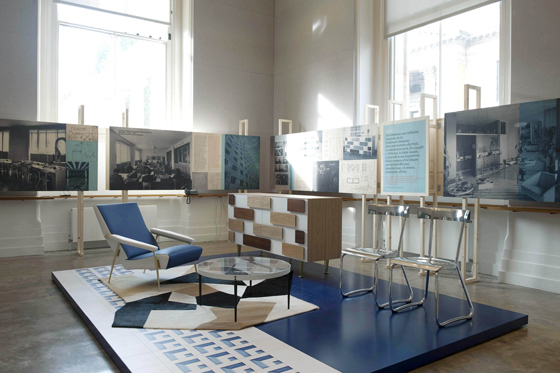
Molteni&C got to grips recently with the thorny issue of the licenced reproduction of classic designs and just how far one can modify them when it set about putting a number of previously limited-edition Gio Ponti designs into production
×But what it means to ‘respect’ an original idea is open to interpretation.
Vitra’s recent reworking of Charles and Ray Eames’s archly iconic 1956 ‘Lounge Chair’, for which it holds the licence for the European market, involved changing its dimensions to accommodate the more vertically oriented among us, AKA tall people. The Swiss manufacturer offers both versions of the product for sale – the original and the modified. It would be churlish, perhaps, to argue that the new iteration of this classic piece doesn’t respect the original.
Chief designer at Cologne-based system-furniture design manufacturer S+, Thomas Merkel recognises the need for making interventions in established product designs, but acknowledges the sensitivities around introducing such changes, particularly with regard to authorship. ‘I’m sure if Eames were alive today he would have modified the chair,’ he says. ‘But if someone else is going to do it, you need to find someone who can do it right. I would find it difficult if someone came along and made a change to my design that I wasn’t aware of. I would rather do it myself.’
‘I’m sure if Eames were alive today, he would have modified the chair,’ says S+ (formerly SDR+) chief designer Thomas Merkel of the American's 1956 ‘Lounge Chair’, which manufacturer Vitra now also offers in more generous proportions

‘I’m sure if Eames were alive today, he would have modified the chair,’ says S+ (formerly SDR+) chief designer Thomas Merkel of the American's 1956 ‘Lounge Chair’, which manufacturer Vitra now also offers in more generous proportions
×If anyone knows about the complexities involved in the delicate business of evolving iconic design products, it’s Merkel, who joined the newly founded SDR+ in 1996 as guardian, as it were, of Dieter Rams’s furniture designs. (The DR in the company name referred to the legendary German industrial designer, while the + signified the idea of expanding on Rams’s work, creating new systems in concert with his famously rigorous design philosophy, while making any necessary technical adjustments to keep the products up to date.)
Names change as well as designs sometimes; the start of 2013 sees the German manufacturer’s name change officially from SDR+ to S+, as the full suite of worldwide rights for the Braun design director’s furniture migrates to London-based manufacturer Vitsoe. From the mid-1990s onwards, Vitsoe had been licensed to produce his iconic 606 shelving system for sale outside mainland Europe, whereas SDR+, in addition to holding the European licence for the product, also counted the worldwide licences for Rams’s other system designs – his 620 chair programme and his 570 table programme – among its product stable.
‘Without doubt an outstanding product’ is how S+’s (formerly SDR+) Thomas Merkel describes Dieter Rams’s iconic 606 shelving system. Both SDR+ and Vitsoe worked with Rams over 15 years on a number of ‘adjustments’ and ‘improvements’
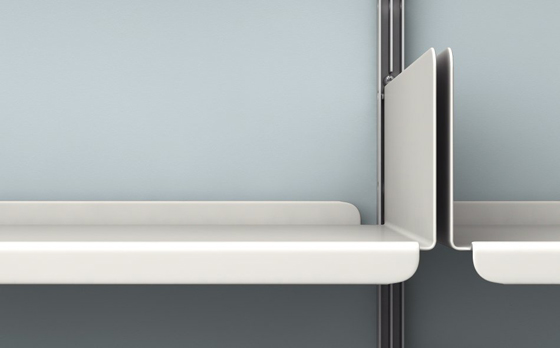
‘Without doubt an outstanding product’ is how S+’s (formerly SDR+) Thomas Merkel describes Dieter Rams’s iconic 606 shelving system. Both SDR+ and Vitsoe worked with Rams over 15 years on a number of ‘adjustments’ and ‘improvements’
×The reason for the transfer? In Merkel’s opinion, while he enjoyed a productive relationship with Rams that resulted in a series of ‘adjustments and updates, which were naturally discussed with him,’ it was the issue of colour that led to Dieter Rams’s departure from SDR+’s operation. According to Merkel, Rams was less than impressed with SDR+’s release of his 606 shelving programme in special colours. (The appearance of his shelving at an exhibition in Italy in a non-standard colour was, allegedly, the catalyst for the withdrawal of the licences, or rather, them not being renewed.)
The disappearance from your business of a product that constitutes 80% of your turnover presents a challenge, to say the least. But a sanguine Merkel sees things from both sides. ‘It’s a difficult situation for me,’ he explains, ‘as I understand, as a designer, where he’s coming from. But I am also part of a company that sells the product.’ (Colour is never a black-and-white issue, it would seem.) For Merkel, there’s often a tension between designerly vision and the reality of the market and its demands. ‘For Rams, however,’ says Merkel, ‘it’s not about commercial interest. It’s about an attitude towards design.’
Designed by Dieter Rams and first launched in 1962, the 620 chair programme has undergone an internal re-engineering, which Vitsoe MD Mark Adams describes as ‘a massive undertaking’
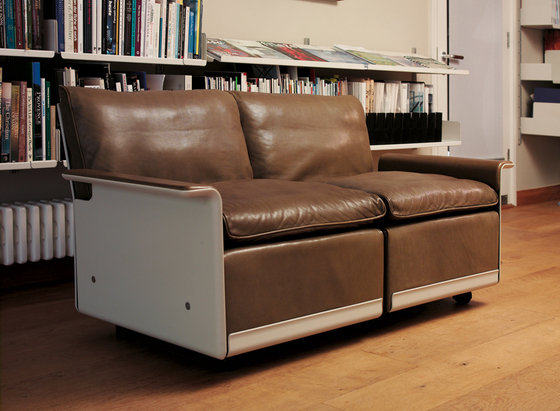
Designed by Dieter Rams and first launched in 1962, the 620 chair programme has undergone an internal re-engineering, which Vitsoe MD Mark Adams describes as ‘a massive undertaking’
×Vitsoe’s managing director Mark Adams has always welcomed Dieter Rams’s exacting approach to design. The company, named after its founder, Niels Vitsoe, who along with designer Otto Zapf started bringing the Braun chief’s furniture designs to market in 1959, has benefitted hugely from his challenging, interrogative nature. ‘His ability to be inquisitor,’ explains Adams, ‘is extremely valuable to us.’
In contradistinction to Merkel, Adams, who worked with Niels Vitsoe for ten years before he died in 1995 and whose collaboration with Rams is now in its 27th year, doesn’t view Rams’s adherence to the notions and practices of reduction and simplicity as being at odds with business profitability. ‘We will not be continuing what SDR+ has done, for example with (the 606 shelving system in) the pure white, because that’s not true to the original’, the original being pale grey. Reduction, he maintains, ‘is what gives the customer as much freedom as possible. It’s all about educating the customer. We’re not saying don’t have red, for example, in your life. But do it in other ways than furniture, which has got to last a generation or two, or three or four.’
For Adams, it’s all about the long game and that means a consistency of product on which long-term relationships with customers are built. ‘Furniture cannot be a fashion item,’ he argues. ‘We won’t play that game. If we lose a few customers because we don’t pander to fashion, then absolutely: we’re happy to lose them.’
The future is bright for S+. With the departure of the licences to Dieter Rams’s furniture, the company has developed an entirely new shelving and sideboard system with technically innovative suspension brackets that allow great flexibility
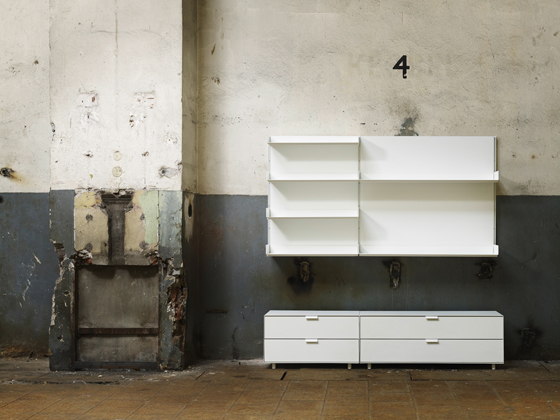
The future is bright for S+. With the departure of the licences to Dieter Rams’s furniture, the company has developed an entirely new shelving and sideboard system with technically innovative suspension brackets that allow great flexibility
×This isn’t to say that Vitsoe hasn’t, like SDR+, made technical modifications to Rams’s 606 Shelving System over the years. ‘I was asked last year,’ explains Adams, whose background in evolutionary biology seems rather fitting here, ‘to document the improvements we’ve made to the shelving system since 1995 and I came up with a list of 80 improvements; from small details up to significant, large details. Dieter has been involved in all of that, at every step.’
With the official transfer for the furniture-design licences to Vitsoe taking place on 1 January, 2013, Rams has issued a statement where he describes the company as ‘the best hands’ in which to place his complete portfolio of furniture products, considering it to be ‘in true alignment with the values of my design’. S+’s loss would, at this point, appear to be Vitsoe’s gain.
But the story doesn’t end here. Both companies are putting their best foot forward and rising to the challenge of recent developments. Thomas Merkel sees the hand that’s been dealt him and his colleagues in terms of creative opportunity. S+ have been busy developing a new shelving system, ‘System M’, which draws the spirit of Rams’s iconic 606 system, but does things somewhat differently.
‘For me,’ explains Merkel, ‘the 606 system is, without doubt, an outstanding product. But it’s from the 1960s. If you were to create that system today, you’d do it differently. You’d try to find a different solution. That’s what we’ve tried to do with our new system.’ Technically new suspension brackets, which allow a greater flexibility in terms of how individual elements are positioned, are just one of its innovations.
S+’s M05 side table programme, designed by Thomas Merkel, is, as you would expect from the German system-furniture manufacturer, thoroughly systematic. Four different table heights, as well as four different table tops, are available
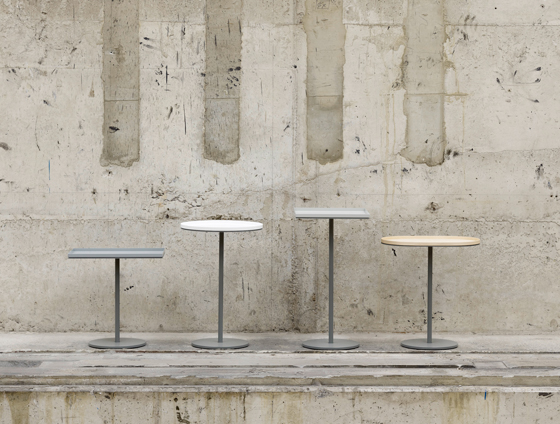
S+’s M05 side table programme, designed by Thomas Merkel, is, as you would expect from the German system-furniture manufacturer, thoroughly systematic. Four different table heights, as well as four different table tops, are available
×Meanwhile, for Vitsoe, the 606 system continues to have a significant market relevance and even more so now that the company is the sole licence-holder for it internationally. Moreover, the acquisition of the rights to Rams’s equally systematic 620 chair programme, first launched in 1962, has meant a considerable amount of the manufacturer’s resources directed towards its development, too. Described by Adams as a ‘massive undertaking’, his team have spent the last 18 months rethinking the seating system’s insides, while preserving, on the outside, its formal and visual qualities, resulting in a product that, according to the Vitsoe MD, will be significantly cheaper, of a higher quality, and quicker in terms of delivery.
‘Car designs, like the new Fiat 500 or the Mini – these are purely exercises in external form,’ argues Adams. ‘The way we do things is completely the reverse of that. We are staying utterly true to the original philosophy.’
Originality. Sameness. Flexibility. Difference. When it comes to the relation between the historical value and contemporary relevance of iconic designs, and the vexed question of just how original they are in their serial iterations over time, perhaps the only thing that’s certain is that there’s a plurality of opinions and positions out there. Rather like Dieter Rams’s modular design systems themselves, it’s a case of making of them what you will.



